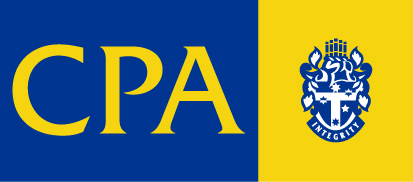On 15 October 2020, the Australian Taxation Office (ATO) released Practice Statement Law Administration PSLA 2020/3 to guide its staff on how to apply administrative penalties imposed on Self Managed Superannuation Fund (SMSF) trustees under subsection 166(1) of the Superannuation Industry (Supervision) Act 1993 (SIS Act). While the guideline is for ATO staff, SMSF trustees are ultimately responsible for their SMSF and are personally liable to pay the fine if they contravene certain provisions of the SIS Act. Therefore, SMSF trustees must understand the type of contraventions that can result in administrative penalties, the ATO’s approach to issuing penalties, and the ATO’s circumstances when considering remission.
Common mistakes trustees make
The first step to avoiding administrative penalties is being aware of the common SMSF trustee mistakes the ATO has identified. These include:
- Opening a bank account in the wrong name
- Setting up a bank account in the name of individuals rather than in the name of the SMSF trustees
- Making investment decisions that are not for the sole purpose of growing and providing retirement benefits to fund members
- Lending fund monies/assets to members or related parties in times of marriage breakdown, financial pressure or family illness
- Holding an in-house asset in excess of 5% of total fund assets (note: an in-house asset is a loan to, or an investment in, a related party, or an investment in a related trust, or a fund asset that is leased to a related party). For example, the business makes losses due to the recent COVID-19 outbreak and needs cash to keep it afloat. The business takes a loan from the fund, and the amount exceeds 5% of the fund’s total assets
- Entering into a borrowing arrangement that fails to meet the requirements of a Limited Recourse Borrowing Arrangement (LRBA) or the ATO’s safe harbour guidelines for a related party LRBA
- Failing to maintain an up-to-date trust deed that aligns with the current superannuation legislation
- Failing to maintain an up-to-date investment strategy that reflects the:
- Fund’s purpose and circumstances
- Liquidity of fund assets
- Diversification of investments, the fund’s ability to pay benefits and the members’ individual needs and circumstances.
How the ATO will know
The most common way a contravention comes to the ATO’s attention is when SMSF trustees use the early engagement and voluntary disclosure services, or where SMSF auditors lodge an audit contravention report.
In the case of audit contravention reports, SMSF auditors are required to notify the ATO of certain regulatory contraventions identified while conducting the annual audit of the fund. This creates greater visibility and transparency to the ATO regarding a fund’s compliance with its regulatory and tax obligations.
In the annual tax return, SMSF trustees must also declare they have received a copy of the audit report and are aware of any matters raised therein. Trustees are expected to take steps to rectify the breach as soon as possible or risk further penalty in subsequent years.
Once the contravention is reported or detected by the ATO, the ATO can take a range of actions against SMSF trustees depending on the seriousness of the breach, the trustee’s behaviour, and the likeliness of reoffending. For more information on ATO non-compliance directions and provisions of the SIS Act that attract administrative penalties, click here.
Administrative penalties and a new approach
ATO staff should now follow four basic steps when administering penalties:
- Determine if a penalty can be imposed by law
- Determine who is liable to the penalty
- Determine if remission is appropriate
- Notify each trustee and/or each director of the corporate trustee of the liability to pay the penalty.
Administrative penalties are imposed on the SMSF trustees or the corporate trustee’s directors who are personally liable to pay the fine, and they cannot be compensated from SMSF assets.
In the case of individual trustees, each trustee is penalised, whereas the directors of the corporate trustee are jointly and severably liable for a single penalty imposed on the corporate trustee.
This means a SMSF with four individual trustees could end up paying a penalty four times greater than what would be paid if the fund had a corporate trustee.
A penalty unit is currently valued at $222, and contraventions of certain provisions of the SIS Act can attract up to 60 penalty units per breach. The penalties calculated previously could increase if multiple provisions are breached as part of a single transaction, or there were multiple contraventions of the same provisions before the mistake is identified and rectified.
According to the new guideline, the main objective of the penalty provision is to encourage voluntary compliance by ensuring there are consequences for poor behaviour, to promote consistent treatment by the ATO and to shift the behaviour of trustees so they do not contravene again.
When penalties may be remitted
The ATO will take several factors into account when determining if remission is appropriate. These factors include:
- The purpose of the penalty provision
- The trustee’s behaviour and circumstances
- The seriousness of the contravention
- Any unintended or unjust results
- Multiple penalties
- Multiple breaches of the same or different provisions.
For example, the ATO is likely to remit penalties if:
- The fund has a good compliance history
- The breach was rectified before the audit
- The trustee voluntarily entered into an early engagement with ATO in respect to the breach
- The trustee had evidence to support that circumstances under which the breach occurred were beyond their control.
On the other hand, the ATO is unlikely to remit penalties if the fund:
- Has a poor compliance history
- Has a pattern of repeated bad behaviour
- Trustees’ behaviour was a deliberate act to obtain a personal gain
- Made a serious contravention.
Multiple penalties
The ATO acknowledges it will be inappropriate to impose multiple penalties accumulated from multiple contraventions of the same provisions arising from a single course of action. Similarly, if a particular course of action results in contraventions of more than one provision, it will be unjust to impose multiple administrative penalties.
For those situations, the ATO will consider whether penalty remission is warranted.
EXAMPLES FROM PSLA 2020/3
Example 1 – Loan to a member
A loan was made to a related party of the SMSF and the SMSF trustees (x2) failed to seek repayment on six different occasions during two financial years.
This is a contravention of 60 penalty units and each failure is a breach.
Penalty = 6 x 60 penalty units x $222 per unit x 2 individual trustees = $159,840
New approach
The ATO considered it appropriate to remit those multiple penalties on the basis that the contraventions were the result of a single course of action.
New penalty per trustee = 60 penalty units x $222 per unit = $13,320
Example 7 – Illegal early release
An amount of $500,000 was withdrawn by a member who had not met a condition of release.
This is a contravention of s34(1) by paying a benefit early (20 penalty units) and s 65(1) by providing financial assistance to members (60 penalty units).
Penalty = (20 + 60 penalty units) x $222 per unit x 2 individual trustees = $35,520
New approach
The ATO applied a penalty to the primary contravention (instead of both primary and secondary contravention) of paying the benefits early.
New penalty per trustee = 20 penalty units x $222 per unit = $4,440
Example 8 – Illegal early release
Same facts as Example 7, except the amount was withdrawn in 10 separate instalments for the purpose of funding the purchase of a car.
Instead of applying multiple penalties, the ATO acknowledged the withdrawals were from a single event (i.e. the purchase of a new car) and imposing a penalty for multiple contraventions for one event may not be fair or just. Therefore, only one penalty is applied for the primary contravention of paying a benefit early.
New penalty per trustee = 20 penalty units x $222 per unit = $4,440
“Liability limited by a scheme approved under Professional Standards Legislation”




